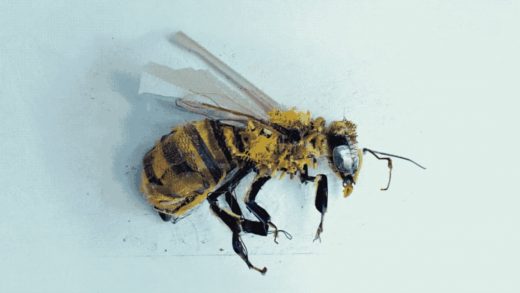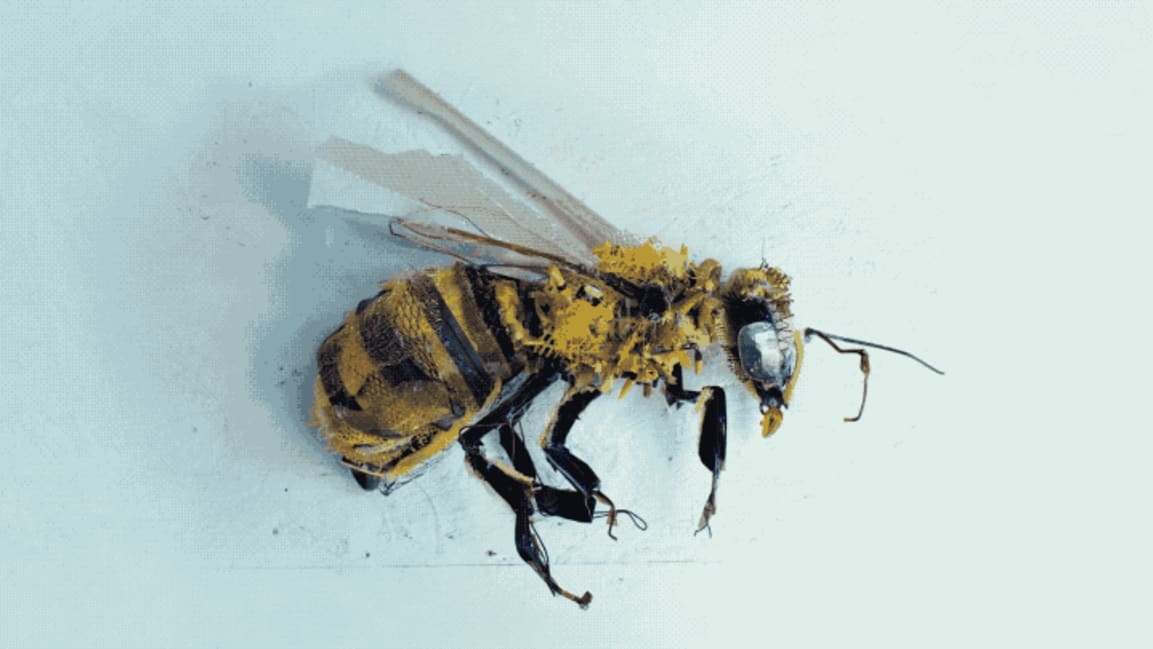These heartbreaking sculptures of nature are made out of the microplastics killing it
At first glance, the sculptures of a bee and a fish pinned to the wall are strikingly beautiful. They’re full of colors and textures that bring out the organic softness of the bee’s wings, and the delicate movement of the fish’s scales. But as you take a closer look, you’ll see that these pieces of art are made entirely of plastic waste.
Thomas Deininger describes himself as a trash artist. He collects pieces of garbage littered on the streets, then creates sculptures out of them. In the past, he’s used cigarette filters to make realistic-looking rabbits, computer keys to make impressionist landscapes, and old shoes and wires to draw nudes.
Through his art, Deininger has spent a lot of time looking at the detritus of modern life, which threatens life on this planet, from the water to the air itself. Since plastic does not decompose, it will sit for centuries in our landfills and oceans. Sea animals often mistake pieces of plastic for food, which can kill them. And litter on the ground disrupts local ecosystems, which could eventually drive them into extinction. In a new short film made by the production studio Gnarly Bay, Deininger explains that this gives him a lot of anxiety. “Two or three times a week, I get a deep, punch-in-the-gut feeling,” he says. “It’s my largest anxiety, these massive insect die-offs, bees, fish, and everything else. I think we’re in real trouble.”
Deininger’s art creates a kind of cognitive dissonance. His sculptures are lush and gorgeous, evoking nature as we know it today. And yet, as you’re taking it in, you realize that the materials contained in this art are exactly what is destroying the world around us. And if we don’t stage an intervention soon, art like his may be all we have left to remind us of the beautiful creatures that once populated this planet. Watch Gnarly Bay’s full minidocumentary above.
(10)



